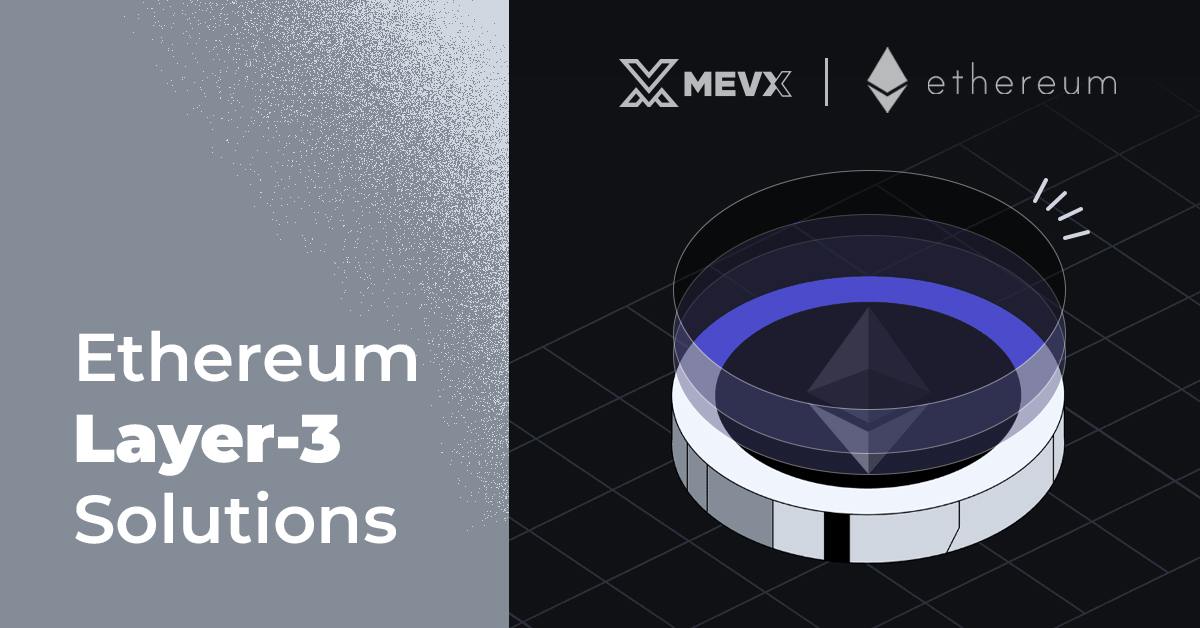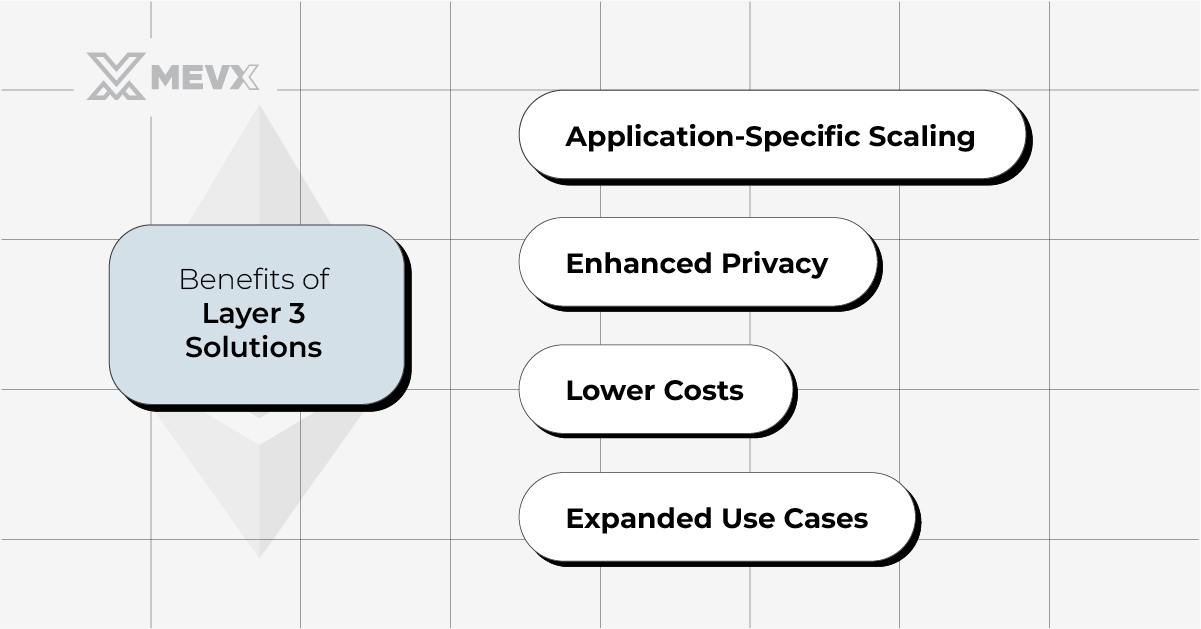While blockchain technology is continuously improving and developing, Ethereum remains the pioneer of innovation. The discussion around Layer-3 solutions has rapidly gained a lot of traction, acting as a kind of hope for a new chapter in blockchain technology. This promised to be something more scalable, customizable, and mainstream. Although Layer-2 solutions increase the efficiency of Ethereum, L3 aims to fulfill more specialized needs and increase its functionality.

This article looks into what Layer-3 solutions are, how they work, what their potential benefits could be, what current challenges exist, and what might be in store for this new layer of blockchain architecture.
What Are Layer 3 Solutions?
To understand L3s, it’s essential to grasp the blockchain architecture they extend:
- Layer 1 (L1): The base blockchain, which can be Ethereum or Bitcoin, provides security, decentralization, and direct transaction processing.
- Layer 2 (L2): Solutions built on top of L1. These solutions, such as Arbitrum or Optimism, are attempting scaling by either doing transactions off-chain or compressing data so that the congestion on the base layer is reduced. You can learn more in our Ethereum Layer 2 article.
Solutions at Layer 3 introduce another level of customization and specificity:
- Application-specific scaling and other advanced features like privacy-preserving transactions or tailored optimizations for DApps basically drive the design considerations of L3s.
- They can unleash the general-purpose scalability of L2s while building an approach so much more fine-grained for every project’s particular project requirement.
How Do Layer 3 Solutions Work?
L3s tend to implement the use of Zero-Knowledge technology. An example is ZK-rollups, whose computation can be verified without showing any sensitive information. Here’s how they function in a multi-layer architecture:
- L2 as a Base Layer: L2s are used for general-purpose scaling, reducing transaction fees, and increasing throughput.
- L3 for Customization: On top of L2s, in L3 solutions, certain applications have dedicated circuits customized for them to do the computation faster, which increases their performance.
- Optimized Execution: Isolating certain functionality from L2 traffic means L3s can reach significantly better speeds for fewer dollars on specific use cases.
For example, Validium, a kind of L3 implementation, does not store the compressed data on L1. Instead, it relies on the validators, hence allowing higher throughput at much lower fees.
Benefits of Layer 3 Solutions
Layer 3 solutions have loads of benefits, making them an important development for blockchain:

- Application-Specific Scaling: L3s offers tailored solutions to individual DApps. This improves their performance without impacting other DApps hosted on the same blockchain.
- Enhanced Privacy: Usage of custom ZK-circuitry will offer better privacy for transactions and data sharing on the L3s.
- Lower Costs: With dedicated resources and optimized execution, L3s can further reduce transaction fees compared to L2s.
- Expanded Use Cases: By addressing specialized needs, L3s unlock new avenues for industries like finance, gaming, and healthcare.
Challenges Facing Layer-3 Adoption
Despite their potential, there are various barriers that Layer-3 solutions must overcome to be more globally adopted:
- Lack of Standardization: A unified framework for L3 infrastructure is currently lacking, making development and integration more complex.
- ZK-Rollup Limitations: Zero-Knowledge is promising, but this technology is still actively being developed. Further refinements are needed to make it more accessible and efficient for wide usage.
- Early Development Stage: As a newly emerging technology, the community still needs to see its long-term viability and scalability in real-world applications.
The entire Web3 ecosystem is working to overcome these barriers by continuously upgrading the ZK technology and making L3 frameworks standardized.
The Future of Layer-3 Solutions
The multi-layered architecture is where the future of blockchain scalability has to be, and the major players will be the L3s. While today much of the discussion is dominated by L2s, L3s promise a new era in innovation for:
- Offering greater cost optimization.
- Facilitating industry-specific applications.
- Driving mass adoption by enhancing blockchain usability.
These probably could be the backbones for a scalable, privacy-preserving, and interoperative blockchain ecosystem powered by continuous Zero-Knowledge technology development, especially with the effort of the Web3 community in improving L3 infrastructures.
Conclusion
Layer-3 solutions represent the next frontier in Ethereum’s road to further efficiency and versatility of its blockchain. Made possible by the power of L1s and further scaled by L2s, L3s surely have the potential to bring customization, speed, and privacy to levels that will finally permit blockchain mainstreaming. Though there is still a thorny path ahead, continuous development related to both ZK technology and standardized frameworks creates a high chance that L3s will be a linchpin of change in the decentralized future.
Share on Social Media:
